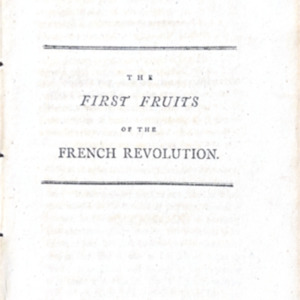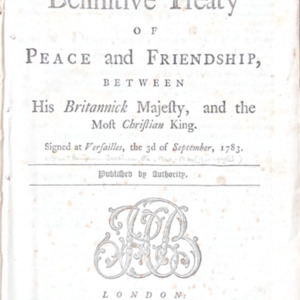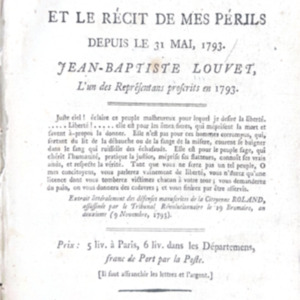In Their Own Words: The French Revolution in Print
The Inevitable Turn: The Revolution on the Horizon
Prior to the French Revolution, France was burdened by massive debt from decades of costly conflicts, including the Seven Years' War (1756–1763) and its financial support for the American Revolution (1775–1783). The monarchy, led by Louis XVI, continued extravagant spending while the tax system unfairly placed the burden on the lower classes, sparing the privileged clergy and nobility. Economic hardship, food shortages, and rising bread prices fueled public anger and unrest. Politically, the rigid social structure of the Ancien Régime left the majority of the population, commoners in the Third Estate, with little voice, setting the stage for revolutionary change.
The pamphlets in this gallery reflect the deep instability that plagued France in the decades leading up to the Revolution. Chronic food shortages, soaring bread prices, and the heavy tax burden placed on the lower classes, exacerbated by years of war and royal extravagance, left much of the population struggling to survive. These conditions eroded faith in the monarchy and the existing social order, as growing unrest and frustration among the common people signaled the early rumblings of revolution. The writings captured here offer a glimpse into a society on the brink, where dissatisfaction was rapidly transforming into political awakening.

First fruits of the French Revolution , 1793
Published in 1793, First Fruits of the French Revolution offers an early reflection on the outcomes of the revolutionary process as France plunged deeper into political, social, and cultural transformation. The pamphlet is part of the broader body of writings that emerged in the wake of the Revolution's initial successes, serving as both a celebration and critique of the changes sweeping through the nation.

The Definitive Treaty of Peace and Friendship marks the formal conclusion of the American Revolutionary War between Great Britain and France. Signed on September 3, 1783, this treaty ended hostilities between the two nations and established terms for peace, solidifying the alliance France had forged with the American colonies during their fight for independence from Britain.
While the treaty primarily focused on the cessation of hostilities and the delineation of borders between British and French territories, it also had significant implications for the broader geopolitical landscape, including the future of the French monarchy and the burgeoning French Republic. The treaty was part of a series of peace agreements that included separate negotiations between Britain and the United States, as well as Spain. It marked the beginning of a new balance of power in Europe and laid the groundwork for future conflicts, including those that would arise from the French Revolution and its aftermath.

Quelques Notices pour L'histoire, Et Le Recit De Mes Perils
Published on the eve of one of the French Revolution's most dramatic turning points, this pamphlet by Jean-Baptiste Louvet offers a deeply personal and politically charged account of survival amidst rising extremism. Issued just as the Jacobin-led insurrection of May 31–June 2, 1793, moved to expel the Girondins from the National Convention, Quelques Notices pour l’Histoire serves as both testimony and warning.